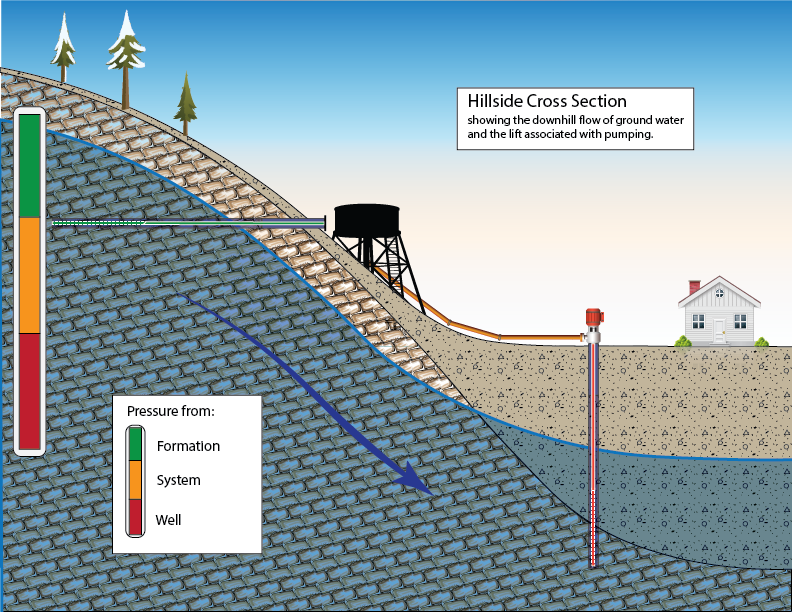

The total flux of the Hydrologic Cycle - water evaporated precipitated and returned to the oceans - is estimated to be about 120,000 cu. miles per year. That equals 400 billion acre-feet, or over 500 trillion tons of water that is lifted and purified via solar power. Exactly how much and where this water returns to the earth is a broad discussion that covers many fields of study, but a substantial portion precipitates on the windward side of mountains, resulting in snowpack and runoff that recharges both surface and ground water down gradient in the watershed. Alluvial basins benefit from this recharge, storing large amounts of water that mankind has been able to exploit. The diagram shows a schematic water system where water from a traditional well (in red) is pumped up from an aquifer to a storage tank above the water system (in orange). Most of the cost of water is in the energy required to lift it from the ground and pump it to where it is needed. The concept behind horizontal well drilling is to short-circuit this process with a borehole (in green) that allows water above the well to find the easier path and simply spill out under the force of gravity. The green bar on the left of the diagram represents the “Formation Pressure” which ultimately is the stored potential energy that makes it all work. So, Horizontal wells are solar powered. If a well can be placed above storage, the water system can be operated by gravity alone.